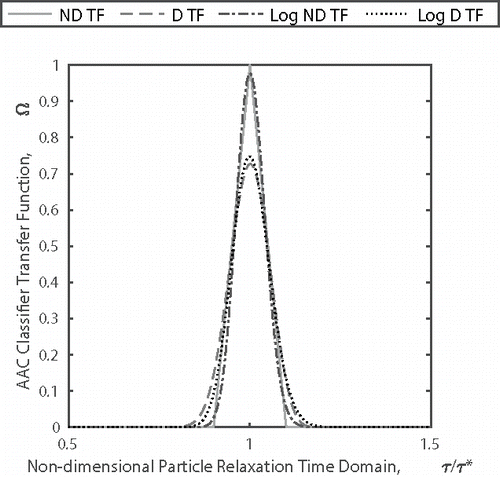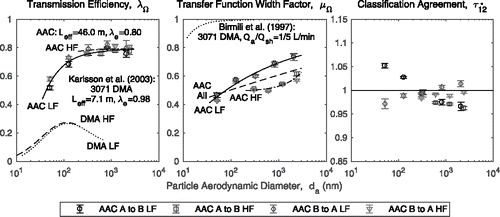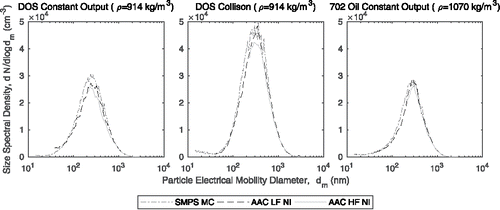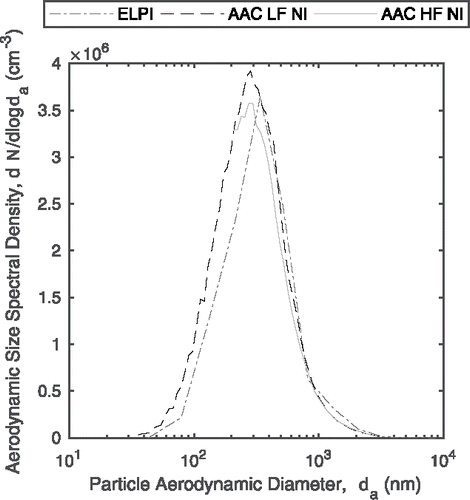Figures & data
Figure 2. AAC-CPC system used to measure the aerodynamic size distribution of an aerosol. This system was validated by comparing against ELPI, SMPS, and CPC measurements in parallel.

Figure 3. Different theoretical representations of the balanced flow AAC transfer function (TF), where the non-diffusing (ND) and diffusing (D) transfer functions were developed by Tavakoli and Olfert (Citation2013) and the log-normal (Log) transfer functions were developed following Stolzenburg and McMurry (Citation2008). The diffusing transfer functions shown represent an AAC setpoint equivalent to a 75 nm particle mobility diameter.

Figure 4. Idealized (Equation (Equation3[3] )) and non-idealized (Equation (Equation7
[7] )) balanced flow AAC transfer function.
![Figure 4. Idealized (Equation (Equation3[3] )) and non-idealized (Equation (Equation7[7] )) balanced flow AAC transfer function.](/cms/asset/d97d5f25-75c8-4939-8b3e-036658faa48e/uast_a_1440063_f0004_b.gif)
Table 1. Fitted coefficients to estimate transfer function broadening as function of particle size.
Table 2. Comparison of mobility size distributions measured by SMPS (corrected for multiple-charging), and AAC (converted using known effective density) in parallel. The direct AAC-CPC systems measurements (denoted as Raw) were corrected for transfer function losses and broadening (denoted by NI).
Table 3. Comparison of aerodynamic size distributions measured by ELPI and AAC (corrected for transfer function losses and broadening, denoted as NI) in parallel.




